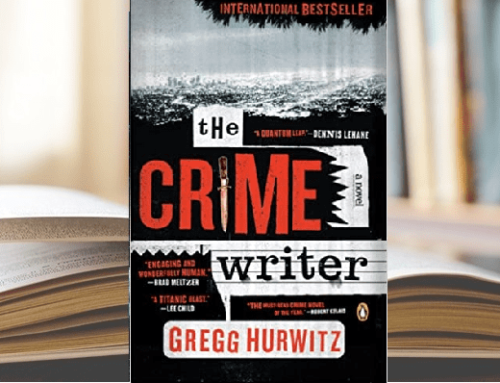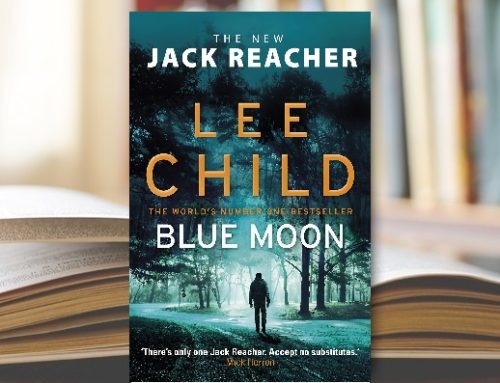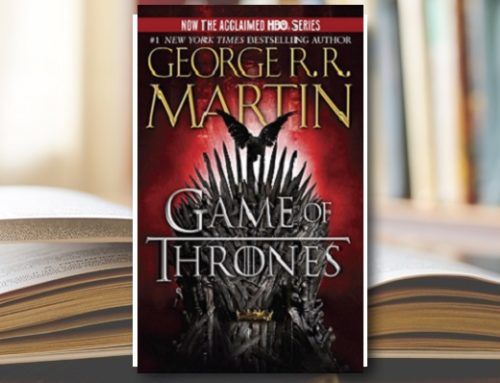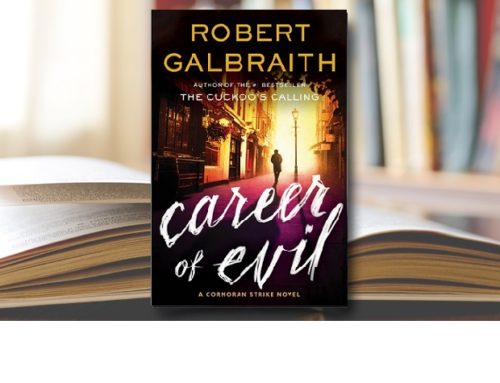[by Ross Browne]
Anyone familiar with my taste in books probably knows how much I love John Sandford and admire his skills as a writer. One reason I like his Lucas Davenport series so much is that these deftly plotted novels usually go deep into the minds of deranged killers in seriously engaging and convincing fashion. Understanding what makes his bad guys tick and seeing their world through their eyes is part of the dark appeal these stories have for me.
There’s a bit of a departure from this in Sudden Prey, the eighth book in the Davenport series. The plot is terrific and unfolds at a breakneck pace. But I notice some different handling of characterization in this novel, and I was interested by its effect on my own engagement with the story. From a craft standpoint–on the topic of characterization and character motivation particularly–I think there’s something valuable to be learned from what I humbly believe Sandford could have done better here.
The plot
“It begins with a death and ends with one. For months, Lucas Davenport’s men have been tracking a vicious woman bank robber named Candy, and when they finally catch up with her, she does not go quietly. In the ensuing shoot-out, she dies — and Davenport’s nightmare starts. For her associates are even worse than she was, particularly her husband, a deeply violent man who swears an appropriate revenge: first he will find the names of those responsible; then he will kill those nearest and dearest to them, just the way they did Candy.”
Sudden Prey wastes no time getting this promising premise underway. The book opens with a sting operation based on motives that may be suspect, and before long Dick LaChaise has escaped police custody and declared war on everyone involved in his loss.
The perps
The bad guys in this book are really bad. Not savage in their cruelty and sadistic impulses like some of Sandford’s more memorable psychos, but stone-cold killers with lots of guns and a serious hard-on for using them. They’re smart, fearless, interesting to listen to, and they certainly have distinctive personalities. All good!
The cast is complex in some respects because there are really four bad guys here. (Or four and a half, depending on how you look at it.) You’ve got Dick LaChaise with his sister and wife dead. You’ve got his two main cohorts, Ansel Butters and Bill Martin backing LaChaise up for as long as they can stay alive. Then you have a crooked cop feeding them information and a kidnapped woman patching their wounds and helping out in a manner of speaking, but as a reluctant kidnapping victim.
One issue I have with this story is that we’ve got these three main bad guys–LaChaise, Butters, and Martin–killing lots of people, taking all kinds of crazy exciting risks that make for great action. But by the end of the book they’re on what pretty much amounts to a suicide mission that’s motivated solely by revenge.
If it were just LaChaise, this motive would probably hold up a lot better. But he can’t do it alone, and the involvement of Butters and Martin, while interesting, seems flimsy because Dick is the only one with a personal stake in the revenge that drives the story. The other two men do unimaginable things and end up willingly giving their lives to a cause they have no direct stake in. There was never supposed to be any money, girls, or other reward. They just do it–set out to systematically shoot cops and their families–and for what? That question is never convincingly answered to my recollection.
It might seem like a small thing on its surface, but it makes an important aspect of the premise feel contrived. Butters and Martin feel like characters who what they do because the author needed them to, not because they had much in the way of especially credible reason to do it. The editor in me would have loved to see Sandford create more complex, credible motivations for Butters and Martin. It wouldn’t be hard to add a dynamic to the plot that makes these guys either owe LaChaise something, want something of their own, or be vulnerable to some kind of manipulation by LaChaise so they don’t have a choice but to do his bidding. But unless I’ve missed something important, the question of their motivation is glossed over.
Consider Sandy Darling, a former nurse who goes along with LaChaise and his crew, but essentially at gunpoint. She’s not a riveting character, but once she starts risking her life to help Davenport catch them she becomes an effective character whom readers should have no problem rallying for.
But she’d be a better character if Sandford had not given her such a muted reaction to her own husband’s murder, save for one moment at the very end of the novel. Her marriage may not have been passionate, but the news of his murder seems to slide right off her without much in the way of an emotional reaction. I understand she’s going through hell, but as a result I found her less likable and trustworthy than would otherwise be the case.
Anyhow, the other bad guy here is a crooked cop named Andy Stadic. He works with Davenport and is able to keep LaChaise apprised as the dragnet tightens around him, or tries to. Worse, he uses insider information to help LaChaise identify and locate his targets. So, with his help, a bunch of cops and their wives die.
But Stadic does this because LaChaise has him over a barrel. This makes enough sense on paper but still feels just a little thin. Stadic has his reasons, but are they enough to play a key role in letting his cop colleagues and families get gunned down in cold blood, to kill someone on his own, and even go after Davenport himself? Maybe…
At the end of the day it’s the missed opportunities with Martin and Butters that interfered most with my enjoyment of an imaginative and exciting plot.
The cops
The key characters here on the right side of the law are Lucas Davenport and his fiance Weather Karkinnen. The usual supporting cast is mostly there: Sloan, Del Capslock, Anne Marie Rioux, and so forth, but they’re just doing their jobs without too much characterizational flair.
One thing that interested me about Sudden Prey is that the Lucas Davenport we see here is different than he was in earlier novels, in part because he’s now engaged to a woman he really cares about, no longer flirting with pretty reporters or wrestling with sexual chemistry. The clinical depression that’s haunted him in the past is no longer a problem, and he spends most of this novel driving a Ford Explorer instead of his snazzy Porsche. He’s no longer so involved in his gaming or entrepreneurial pursuits, having moved on (in all his spare time) to developing law enforcement simulations that don’t get the same degree of attention in the story. Fans of the series will notice that his longtime confidant Elle–his childhood friend who became a nun–is not part of the story.
The editor in me has no problem with any of this. Lucas is still a good cop and a good guy who makes a questionable call early on in the novel that creates trouble for him. I think he’s probably a harder character for Sandford to make riveting now that he’s settling down and no longer the ladies’ man he once was, but that’s how it goes when an author lets his characters grow up. I think there may be some opportunities missed with the conflict between Lucas and his fiance over his setup of the sting that killed LaChaise’s wife and sister and how he handles the case, but with a plot this complex I don’t see this as a problem. Perhaps just more of a missed opportunity.
What bothered me a little bit was Weather’s refusal to protect herself, even when there’s clear evidence that she’s in serious danger. She does the opposite of what any reasonable person would do after learning that she’s a target, doggedly keeping on working scheduled cases at the hospital where there are more vulnerabilities than can be managed. She senselessly (and perhaps selfishly) puts her patients and colleagues at risk, and for no credible reason I can see. Her actions weaken her as a character in my view and feel like plot contrivance. (Albeit one that sets up an exciting finish.)
Lucas’s ex-girlfriend Jennifer does the same thing, though with much better reason. She’s a reporter, and the serial killing of Twin Cities cops is one of the biggest stories in her career. She wants in on that action, and it’s easy to understand why.
Sudden Prey is a book with a strong premise and an exciting plot that readers clearly love. With just a little more work on characterization, I think it could have been a more satisfying read. In a dream world where I got to edit Mr. Sandford’s work, my suggestions for him would have included:
- Giving Butters and Martin a more convincing reason to join LaChaise on this killing spree and take all the risks they do.
- Amplify Sandy’s emotional reaction to Stadic’s murder of her husband.
- Have Stadic feel more guilt or conflict over his betrayal of his police colleagues and/or give him better reason to not feel guilty.
- Have Weather cooperate with Davenport on being protected at first and come out of hiding for some very good reason–perhaps a life or death case that she’s uniquely qualified to handle.
- Amplify the conflict between Weather and Lucas over his questionable moral handling of the sting that kills LaChaise’s wife and sister.
Whether you’ve read Sudden Prey or not, I hope this review will be useful to anyone who writes crime fiction and who may not have given sufficient thought to why your characters–good guys and bad–do what they do. A simple list of all the main players in the story who create or influence plot and a summary of why they take these actions can be helpful in exposing weak, implausible, or nonexistent motivations.
Struggling with characters or characterization in a novel you’ve written? We have several editors on staff who specialize in crime fiction and have lots of experience helping authors make their characters unforgettable. Please contact the Tucson office for details and inquiries.







